【总结】逻辑运算在Z3中运用+CTF习题
国际赛IrisCTF在前几天举办,遇到了一道有意思的题目,特来总结。

题目

附件如下:📎babyrevjohnson.tar
解题过程
关键main函数分析如下:
int __fastcall main(int argc, const char **argv, const char
**envp)
{
int v4; // [rsp+4h] [rbp-7Ch]
int v5; // [rsp+4h] [rbp-7Ch]
int v6; // [rsp+8h] [rbp-78h]
int v7; // [rsp+Ch] [rbp-74h]
char input[104]; // [rsp+10h] [rbp-70h] BYREF
unsigned __int64 v9; // [rsp+78h] [rbp-8h]
v9 = __readfsqword(0x28u);
puts("Welcome to the Johnson's family!");
puts("You have gotten to know each person decently well, so let's see
if you remember all of the facts.");
puts("(Remember that each of the members like different things from
each other.)");
v4 = 0;
while ( v4 <= 3 ) // 在提供的颜色中,选择4种
{
printf("Please choose %s's favorite color: ", (&names)[v4]);//
4个人
__isoc99_scanf("%99s", input);
if ( !strcmp(input, colors) )
{
v6 = 1; // red
goto LABEL_11;
}
if ( !strcmp(input, s2) )
{
v6 = 2; // blue
goto LABEL_11;
}
if ( !strcmp(input, off_4050) )
{
v6 = 3; // green
goto LABEL_11;
}
if ( !strcmp(input, off_4058) )
{
v6 = 4; // yellow
LABEL_11:
if ( v6 == chosenColors[0] || v6 == dword_4094 || v6 ==
dword_4098 || v6 == dword_409C )// 选择4个颜色,然后顺序不能一样
puts("That option was already chosen!");
else
chosenColors[v4++] = v6; // 存储选择的颜色(已经转换成了数字)
}
else
{
puts("Invalid color!");
}
}
v5 = 0;
while ( v5 <= 3 )
{
printf("Please choose %s's favorite food: ", (&names)[v5]);//
4个人最喜欢的食物
__isoc99_scanf("%99s", input);
if ( !strcmp(input, foods) )
{
v7 = 1; // pizza
goto LABEL_28;
}
if ( !strcmp(input, off_4068) )
{
v7 = 2; // pasta
goto LABEL_28;
}
if ( !strcmp(input, off_4070) )
{
v7 = 3; // steak
goto LABEL_28;
}
if ( !strcmp(input, off_4078) )
{
v7 = 4; // chicken
LABEL_28:
if ( v7 == chosenFoods[0] || v7 == dword_40A4 || v7 == dword_40A8
|| v7 == dword_40AC )
puts("That option was already chosen!");
else
chosenFoods[v5++] = v7;
}
else
{
puts("Invalid food!");
}
}
check(); // 开始check,检测我们输入的颜色和食物是否正确
return 0;
}
-----------------------------------------------------------------------将check提取出来,我们方便分析
其实到这里已经可以得到结果了,国外的题目确实很讲究趣味性,用颜色和食物作为导向,引导一步一步分析
笔者使用静态分析的方法,一步一步跟踪
C++
int check()
{
bool v0; // dl
_BOOL4 v1; // eax
_BOOL4 v2; // edx
v0 = dword_40A8 != 2 && dword_40AC != 2;
v1 = v0 && dword_4094 != 1;
v2 = chosenColors[0] != 3 && dword_4094 != 3;
if ( !v2 || !v1 || chosenFoods[0] != 4 || dword_40AC == 3 ||
dword_4098 == 4 || dword_409C != 2 )
return puts("Incorrect.");
puts("Correct!");
return system("cat flag.txt"); // 执行cat flag的命令
}
-----------------------------------------------------------------------对应的输入值地址如下:
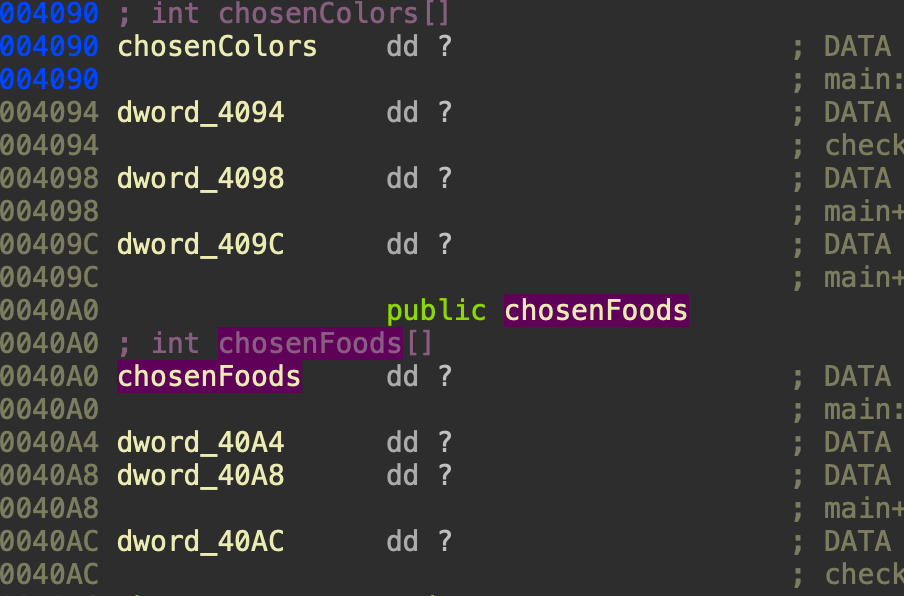
我们将颜色color数组用x系列表示,将食物用food数组y系列表示
化简如下:
C++
v0 = y3 != 2 && y4 != 2;
v1 = v0 && x2 != 1;
v2 = x1 != 3 && x2 != 3;
if ( !v2 || !v1 || y1 != 4 || y4 == 3 || x3 == 4 || x4 != 2
)
{
//错误
}
else
{
//成功
}
-----------------------------------------------------------------------思路1:简单粗暴的爆破,但不是学习的目的,因此并不采用
思路2:锻炼写脚本能力,使用z3解题可以锻炼写脚本的能力,因此采用
Python
from z3 import *
# 创建变量
x1, x2, x3, x4 = Ints('x1 x2 x3 x4')
y1, y2, y3, y4 = Ints('y1 y2 y3 y4')
# 创建约束条件
v0 = And(y3 != 2, y4 != 2)
v1 = And(v0, x2 != 1)
v2 = And(x1 != 3, x2 != 3)
# 创建条件语句
cond = Or(Not(v2), Not(v1), y1 != 4, y4 == 3, x3 == 4, x4 != 2)
cond1 = Not(cond)
#正常来说,cond的值要为false的,但是z3的add添加的条件必须为1才行,因此要进行取反操作
# 创建求解器
solver = Solver()
# 添加约束条件和条件语句到求解器
solver.add(cond1)#这里添加的条件必须为true,所以最后使用了 not 进行取反操作
# 求解
if solver.check() == sat:
# 如果有解,则获取解
model = solver.model()
# 打印解
print("成功:")
print("x1 =", model[x1])
print("x2 =", model[x2])
print("x3 =", model[x3])
print("x4 =", model[x4])
print("y1 =", model[y1])
print("y2 =", model[y2])
print("y3 =", model[y3])
print("y4 =", model[y4])
else:
print("无解")
---------------------------------------------------------------------------------------得到结果
Python
成功:
x1 = 4
x2 = 0
x3 = 5
x4 = 2
y1 = 4
y2 = None
y3 = 3
y4 = 0
-----------------------------------------------------------------------其实有经验的师傅发现了,这是有多解的,因为没有为约束变量添加范围约束
【----帮助网安学习,以下所有学习资料免费领!加vx:dctintin,备注 “博客园” 获取!】
① 网安学习成长路径思维导图
② 60+网安经典常用工具包
③ 100+SRC漏洞分析报告
④ 150+网安攻防实战技术电子书
⑤ 最权威CISSP 认证考试指南+题库
⑥ 超1800页CTF实战技巧手册
⑦ 最新网安大厂面试题合集(含答案)
⑧ APP客户端安全检测指南(安卓+IOS)
改进之后的代码如下:
Python
from z3 import *
# 创建变量
x1, x2, x3, x4 = Ints('x1 x2 x3 x4')
y1, y2, y3, y4 = Ints('y1 y2 y3 y4')
# 创建约束条件
v0 = And(y3 != 2, y4 != 2)
v1 = And(v0, x2 != 1)
v2 = And(x1 != 3, x2 != 3)
range_constraint = And(x1 >= 1, x1 <= 4, x2 >= 1, x2 <= 4, x3 >= 1, x3 <= 4, x4
>= 1, x4 <= 4,
y1 >= 1, y1 <= 4, y2 >= 1, y2 <= 4, y3 >= 1, y3 <= 4, y4 >= 1, y4 <= 4)
# 创建条件语句
cond = Or(Not(v2), Not(v1), y1 != 4, y4 == 3, x3 == 4, x4 != 2)
cond1 = Not(cond)
#正常来说,cond的值要为false的,但是z3的add添加的条件必须为1才行,因此要进行取反操作
# 创建求解器
solver = Solver()
# 添加约束条件和条件语句到求解器
solver.add(cond1)#这里添加的条件必须为true,所以最后使用了 not 进行取反操作
solver.add(range_constraint)
# 求解
if solver.check() == sat:
# 如果有解,则获取解
model = solver.model()
# 打印解
print("成功:")
print("x1 =", model[x1])
print("x2 =", model[x2])
print("x3 =", model[x3])
print("x4 =", model[x4])
print("y1 =", model[y1])
print("y2 =", model[y2])
print("y3 =", model[y3])
print("y4 =", model[y4])
else:
print("无解")
---------------------------------------------------------------------------------------
---------------------------------------------------------------------------------------
得到结果:
-----------------------------------------------------------------------
Python
成功:
x1 = 1
x2 = 4
x3 = 1
x4 = 2
y1 = 4
y2 = 1
y3 = 3
y4 = 4
-----------------------------------------------------------------------发现x1和x3重复了,因此还要添加值不重复约束
Python
from z3 import *
# 创建变量
x1, x2, x3, x4 = Ints('x1 x2 x3 x4')
y1, y2, y3, y4 = Ints('y1 y2 y3 y4')
# 创建约束条件
v0 = And(y3 != 2, y4 != 2)
v1 = And(v0, x2 != 1)
v2 = And(x1 != 3, x2 != 3)
#值范围约束
range_constraint = And(x1 >= 1, x1 <= 4, x2 >= 1, x2 <= 4, x3 >= 1, x3 <= 4, x4
>= 1, x4 <= 4,
y1 >= 1, y1 <= 4, y2 >= 1, y2 <= 4, y3 >= 1, y3 <= 4, y4 >= 1, y4 <= 4)
#非重复值约束
distinct_x=Distinct(x1,x2,x3,x4)
distinct_y=Distinct(y1,y2,y3,y4)
# 创建条件语句
cond = Or(Not(v2), Not(v1), y1 != 4, y4 == 3, x3 == 4, x4 != 2)
cond1 = Not(cond)
#正常来说,cond的值要为false的,但是z3的add添加的条件必须为1才行,因此要进行取反操作
# 创建求解器
solver = Solver()
# 添加约束条件和条件语句到求解器
solver.add(cond1)#这里添加的条件必须为true,所以最后使用了 not 进行取反操作
solver.add(range_constraint)
solver.add(distinct_y)
solver.add(distinct_x)
# 求解
if solver.check() == sat:
# 如果有解,则获取解
model = solver.model()
# 打印解
print("成功:")
print("x1 =", model[x1])
print("x2 =", model[x2])
print("x3 =", model[x3])
print("x4 =", model[x4])
print("y1 =", model[y1])
print("y2 =", model[y2])
print("y3 =", model[y3])
print("y4 =", model[y4])
else:
print("无解")
---------------------------------------------------------------------------------------最终得到正确的结果
Python 成功: x1 = 1 x2 = 4 x3 = 3 x4 = 2 y1 = 4 y2 = 2 y3 = 3
y4 = 1
x1-x4= 1 4 3 2
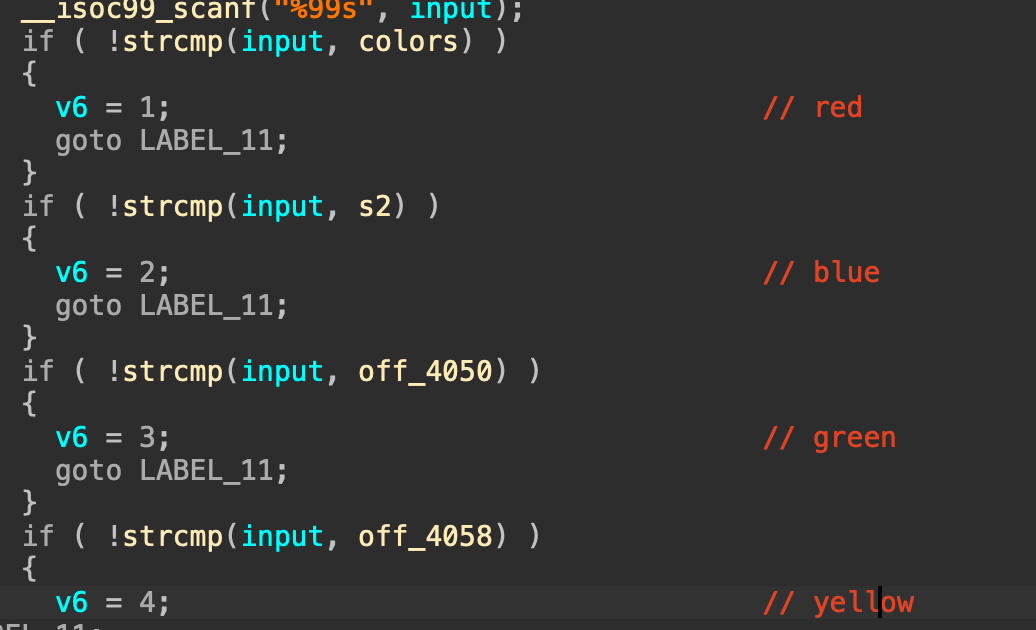
y1-y4= 4 2 3 1
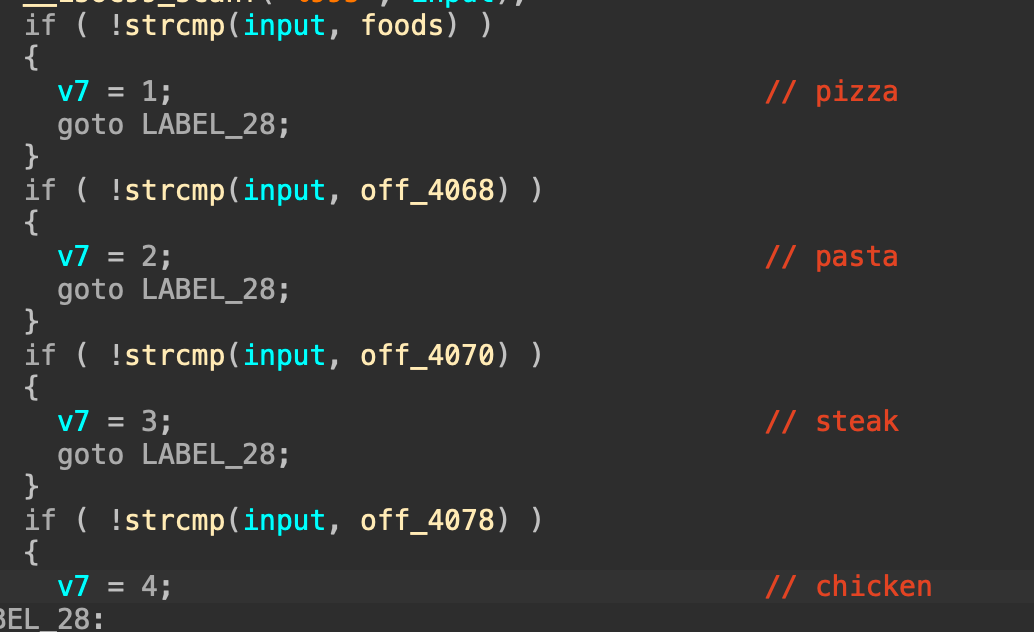
按照这样的顺序输入即可:
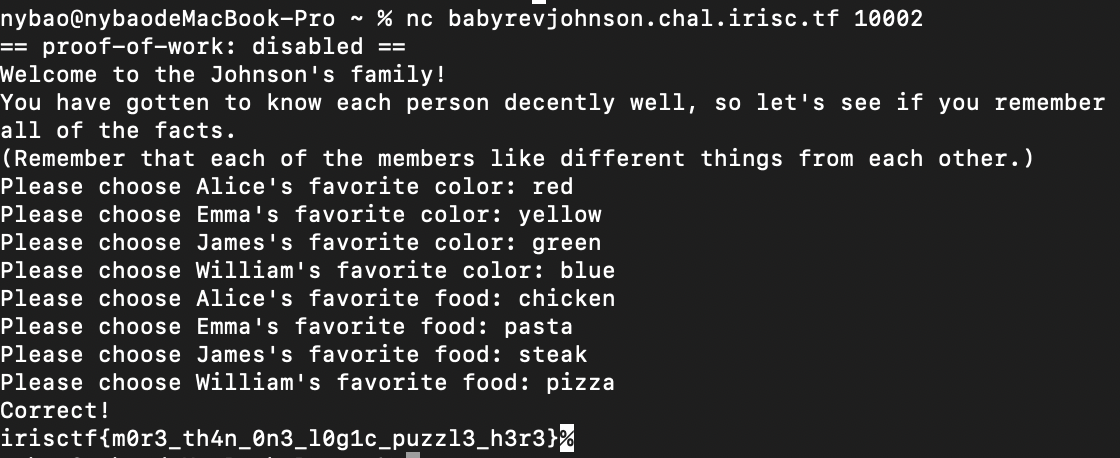
得到了flag
irisctf{m0r3_th4n_0n3_l0g1c_puzzl3_h3r3}
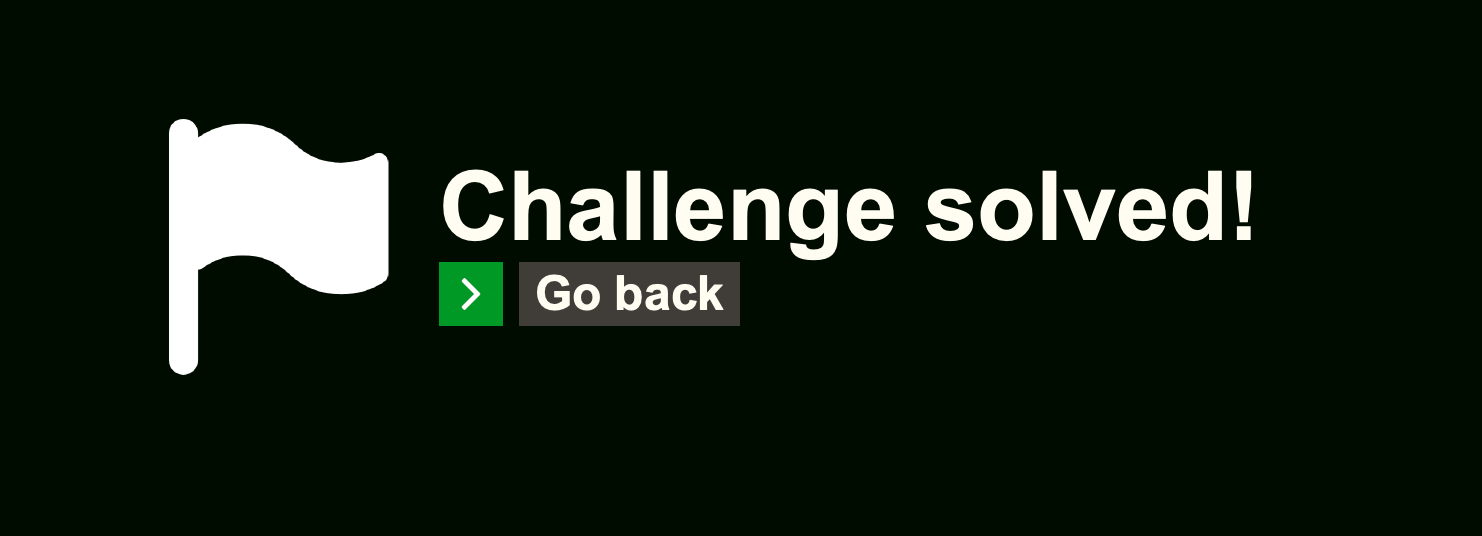
总结
题目并不是很难,没有复杂的ollvm混淆也没有复杂的加密。但是却一步一步引导我们去学习和总结。z3解题的过程中,会有很多误解,然后经过自己的思考总结,发现了漏掉的东西,再进行补充,最终写出正确的脚本。
国外的题还是很值得学习的,不单单为了出题而出题。这就是逻辑运算在z3的运用以及如何增加约束,让z3求解出我们需要的key。
更多网安技能的在线实操练习,请点击这里>>




【推荐】国内首个AI IDE,深度理解中文开发场景,立即下载体验Trae
【推荐】编程新体验,更懂你的AI,立即体验豆包MarsCode编程助手
【推荐】抖音旗下AI助手豆包,你的智能百科全书,全免费不限次数
【推荐】轻量又高性能的 SSH 工具 IShell:AI 加持,快人一步
· 全程不用写代码,我用AI程序员写了一个飞机大战
· DeepSeek 开源周回顾「GitHub 热点速览」
· 记一次.NET内存居高不下排查解决与启示
· MongoDB 8.0这个新功能碉堡了,比商业数据库还牛
· .NET10 - 预览版1新功能体验(一)
2023-07-17 CVE-2023-1454注入分析复现